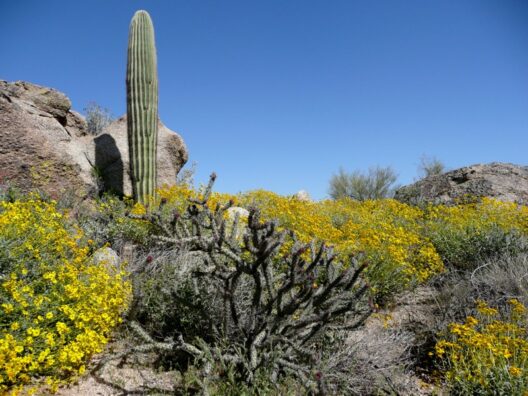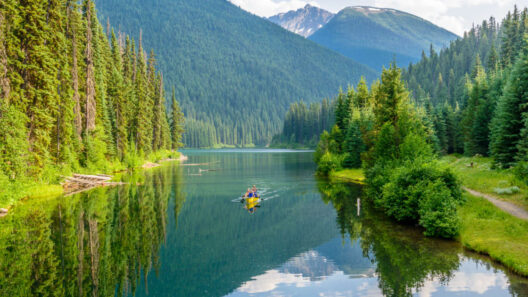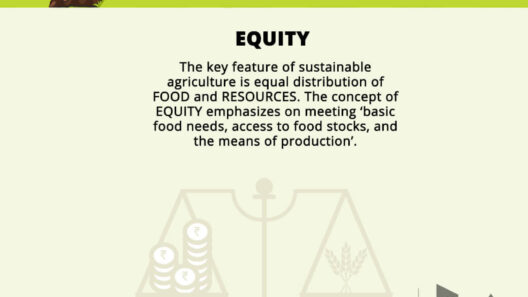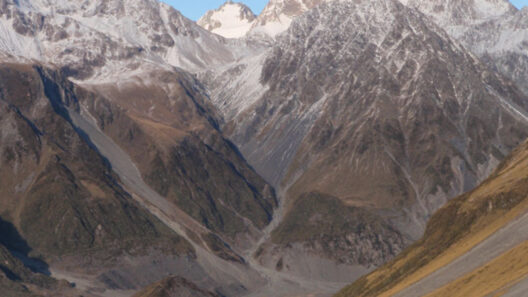Soil, that often-overlooked layer of the Earth, is a complex and dynamic medium that serves as the foundation for all terrestrial life. As we navigate the intricate web of ecosystems, it is crucial to understand that the formation of soil is not an isolated process. Instead, it is an intricate interplay between climatic conditions, geological materials, and biological activities. This discussion aims to unravel the profound influence of climate on soil formation over time, emphasizing the roles of roots and rocks within this myriad of interactions.
What if we could ask the soil a question? “What stories do you tell about the climate of the past?” This playful inquiry leads us to contemplate the challenge of interpreting these tales embedded within the layers of soil. Soil is a historical archive that reveals climatic shifts through the lens of minerals, organic matter, and microbial activity. Each horizon of soil tells a fragment of its former environment, much like tree rings serve as historical markers for trees. In this sense, understanding soil formation can enhance our comprehension of climatic changes over time.
The formation of soil, or pedogenesis, is primarily driven by five key factors: parent material, climate, topography, organisms, and time. Among these, climate holds a particularly pivotal role as it influences the rate of weathering of rocks and the subsequent development of soil horizons. Weathering itself can be physical, chemical, or biological, and each method uniquely interacts with climate. For instance, in temperate regions, variations in temperature and moisture facilitate rapid weathering of rocks, transforming them into finer particles. In contrast, arid climates may slow down this process, leading to the formation of sandy soils that have lower fertility.
To delve deeper into this relationship, let’s examine the role of rocks as parent material. Every soil begins its life from rocks—be it granite, limestone, or basalt. These rocks weather at different rates depending on climatic conditions. For example, silicate minerals, abundant in granite, dissolve more readily in warm and moist climates. The resulting soils are rich in nutrients, fostering diverse ecosystems. On the flip side, limestone in dry areas can persist for longer periods, contributing to the underlying soil’s distinct characteristics. Understanding the transformation from rock to soil establishes a connection between geological processes and climatic influences.
Let’s not forget the role of vegetation in this intricate dance of soil formation. Roots of plants contribute significantly to soil development, enhancing the physical and chemical weathering of rocks. Their growth patterns and nutrient uptake are directly influenced by climatic conditions, affecting the soil structure and composition over time. In a hot, humid climate, root systems penetrate deeper, promoting the leaching of minerals, and resulting in more fertile soils. In temperate zones, less aggressive root systems may lead to different soil characteristics, often influenced by seasonal changes. Hence, vegetation patterns can alter the formation and structure of soil, iterating the importance of climate.
The interaction between soil organisms and climate also merits attention. Microbial processes are foundational to enhancing soil fertility through organic matter decomposition and nutrient cycling. Temperature and moisture levels regulate microbial activity, which in turn influences the rate of organic matter accumulation in the soil. Under optimal conditions, microbes thrive, leading to the formation of rich, loamy soils. In contrast, cooler or drier climates may impede microbial processes, leading to soil that is less capable of supporting diverse plant life. Understanding these interactions provides a deeper appreciation of how ecosystems react to climatic variables.
Topography plays an accompanying role in this saga of soil formation. The curve and contour of the land interact with climate and vegetation, impacting moisture retention and erosion rates. On a slope, for example, soil may erode more quickly during heavy rains, revealing the underlying rocks and altering the soil profile. This interplay produces various soil types within a small geographic area, highlighting the complexity of soil formation processes shaped by climate. Each unique soil profile tells its own story influenced by various climatic conditions and topographical features.
As we observe soil through the prism of time, we witness the long-term impacts of climate on soil formation. Changes in atmospheric conditions, from glacial periods to warming trends, have altered the very fabric of soil development. Anthropogenic climate change, driven by human activities, now poses a significant threat to this intricate process. Increased temperatures and altered precipitation patterns can lead to soil degradation, loss of fertility, and erosion, all of which jeopardize food security and ecosystem health. As stewards of the Earth, we should consider how our actions affect both current and future soil formation.
In summary, the relationship between climate and soil formation is a convoluted yet fascinating narrative that spans millennia. The dance of roots and rocks, influenced by climatic conditions, narrates a history that is integral not only to the soil itself but to the entire biosphere. In an era of rapid environmental change, grasping the complexity of soil formation can inform sustainable practices aimed at preserving the Earth’s precious resources. As we ponder the playful question posed earlier, the stories told by soil compel us to advocate for a planet where both climate and our precious soils can thrive harmoniously.
Ultimately, understanding this profound relationship is not merely academic; it is vital for cultivating resilient ecosystems that can withstand the challenges posed by climate change. How we manage our interactions with soil will dictate not only our agricultural productivity but also the health and balance of our natural environments. The challenge remains—will we heed the stories inscribed in layers of soil and act to protect them for future generations?






